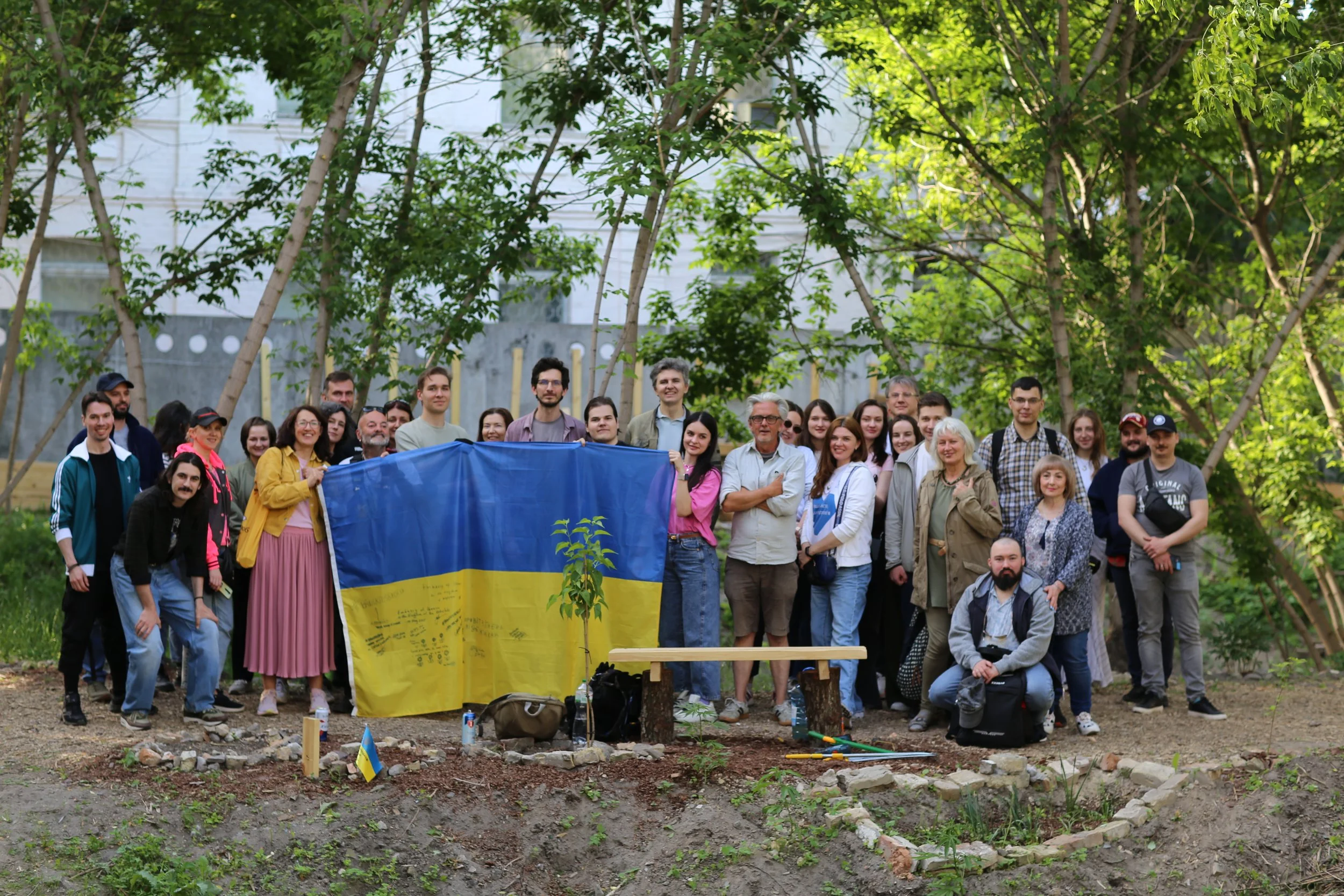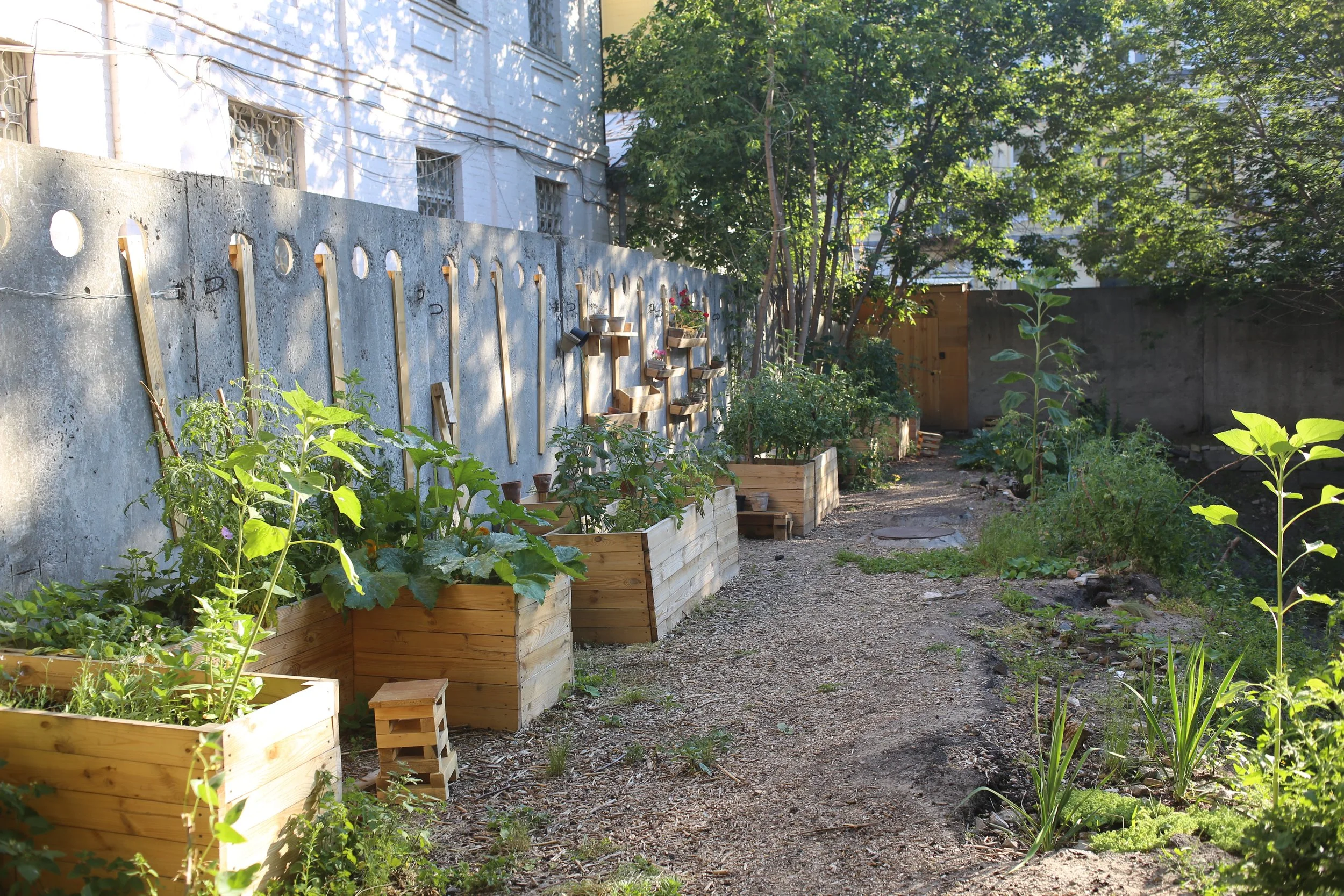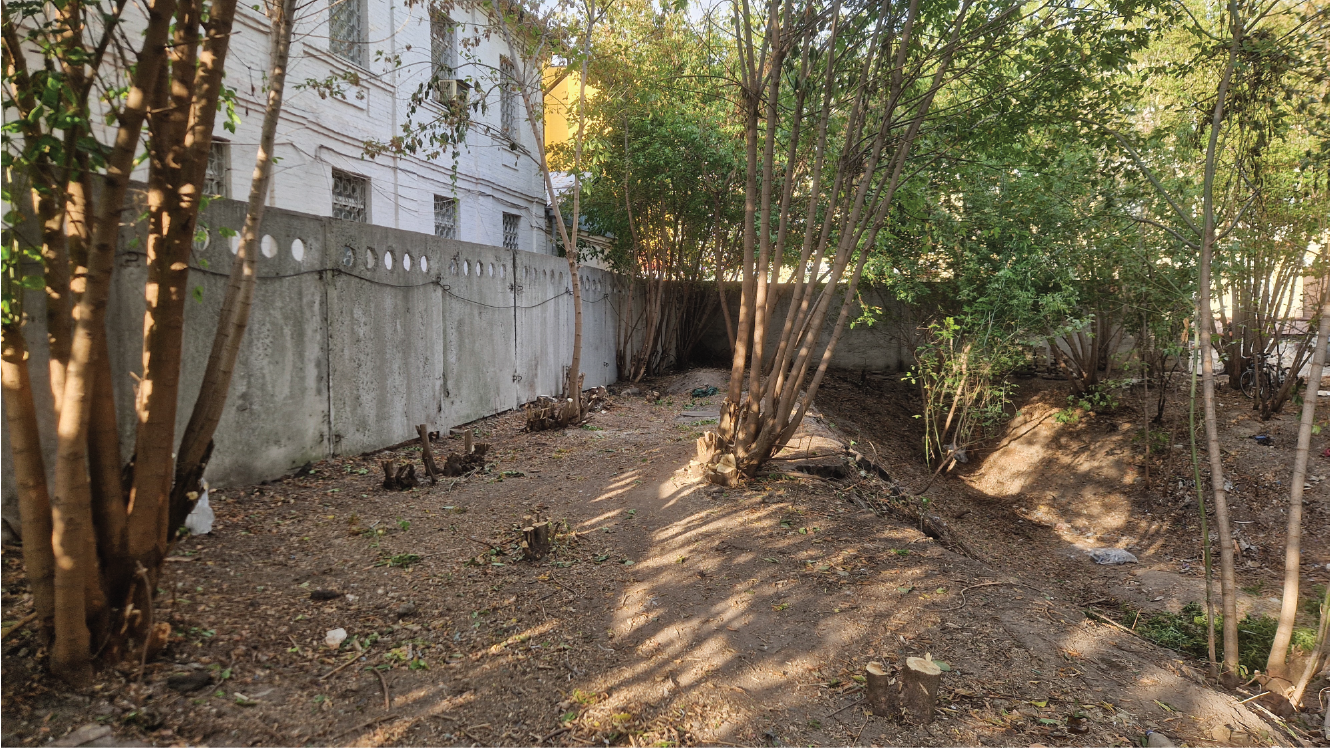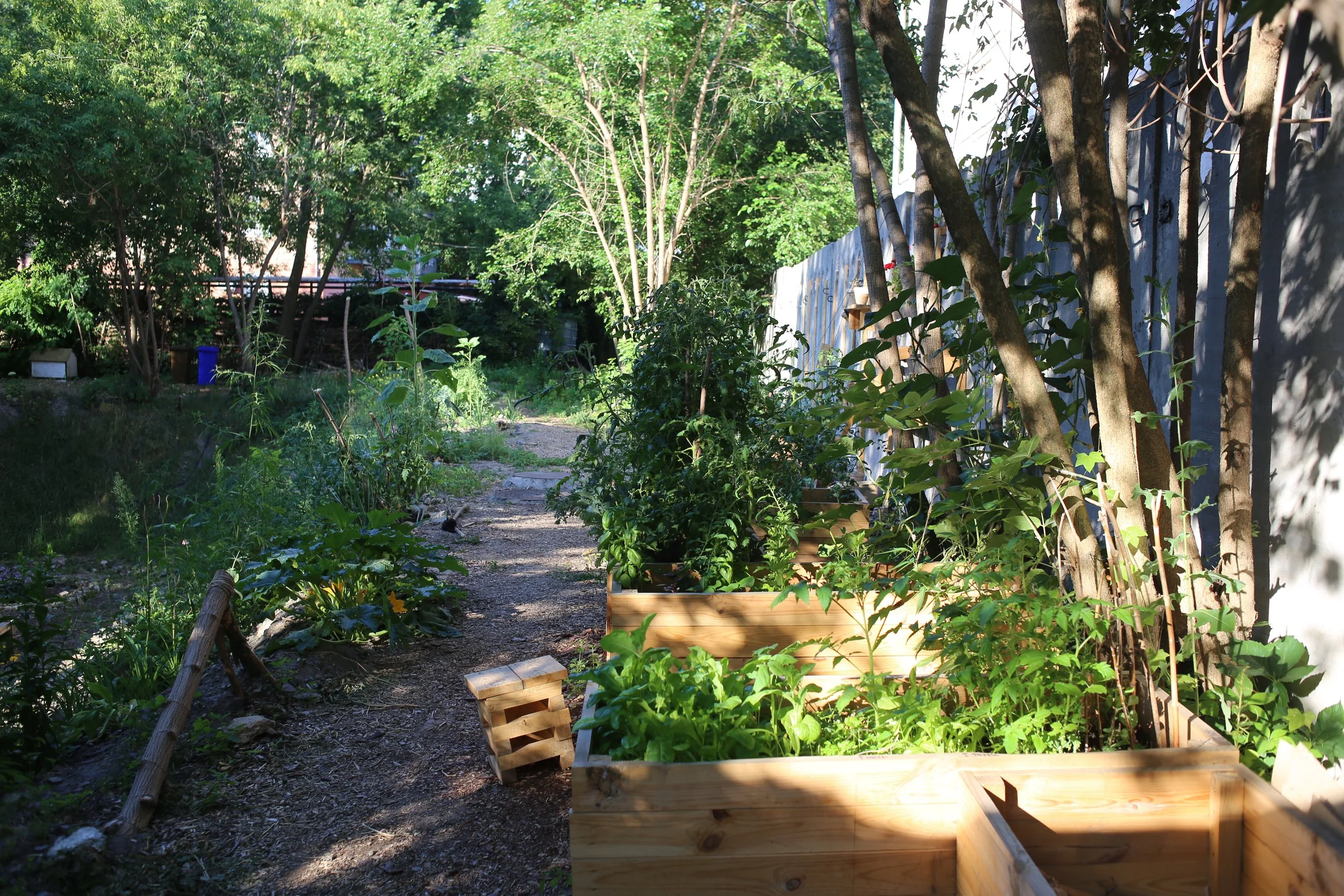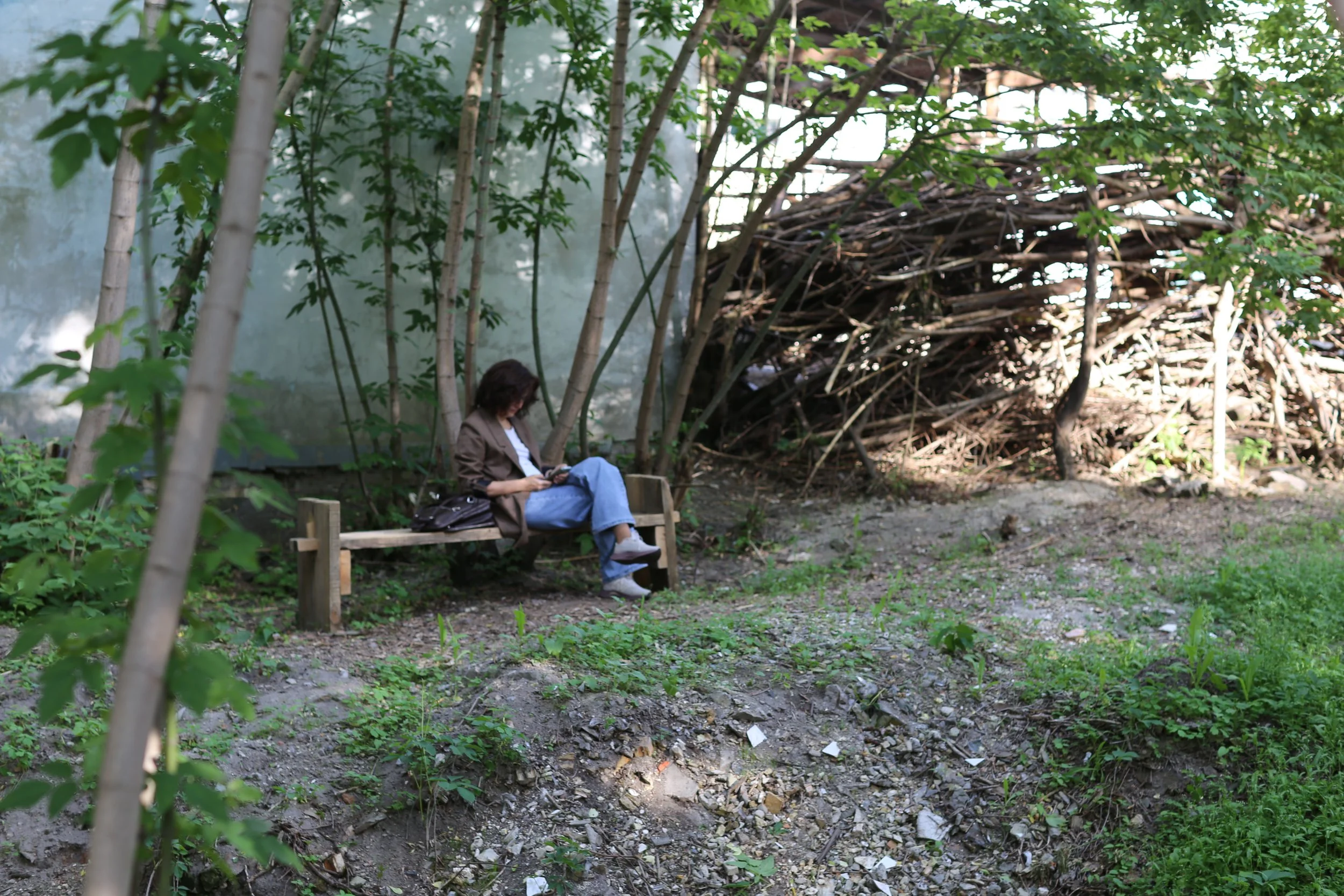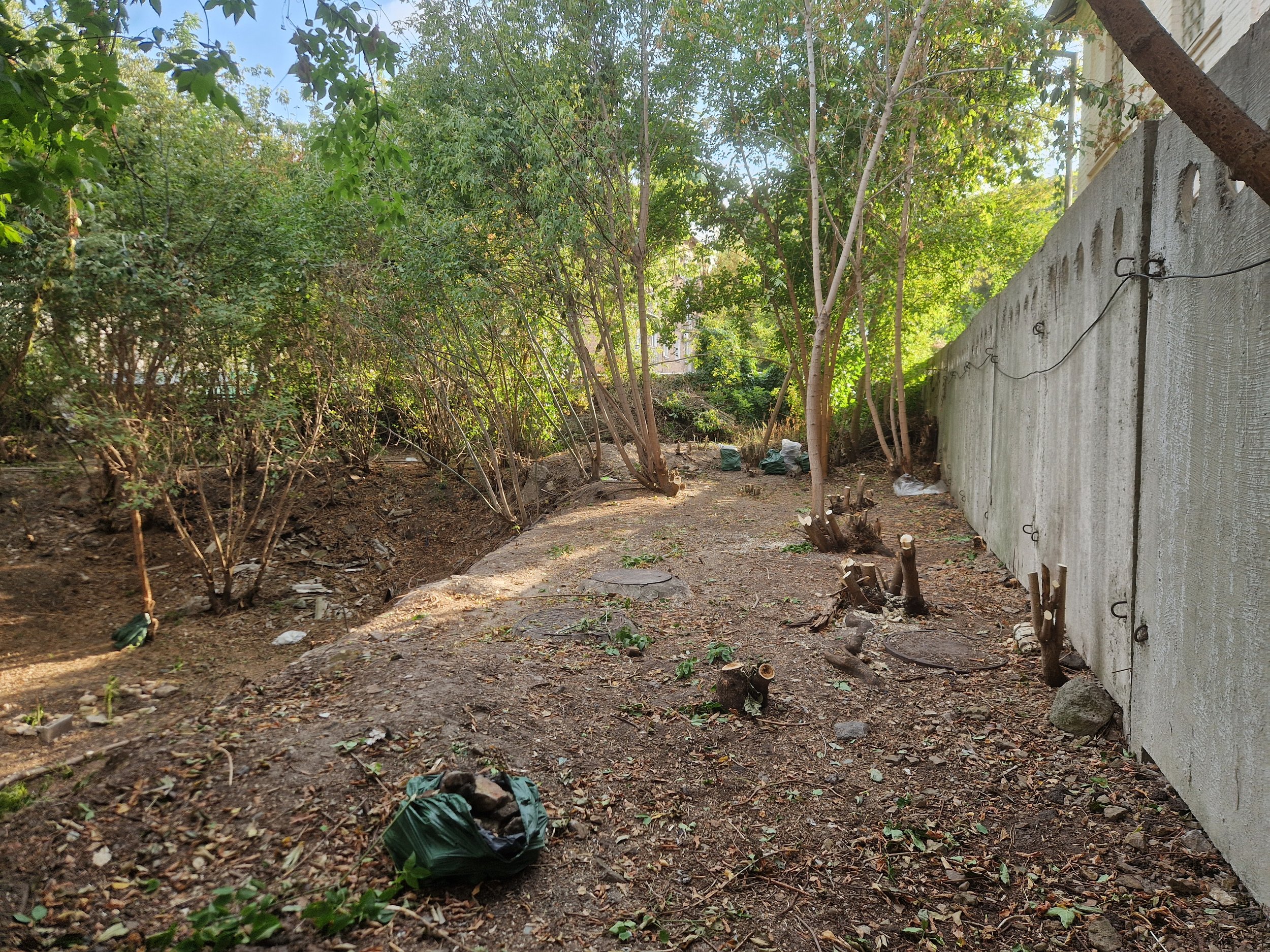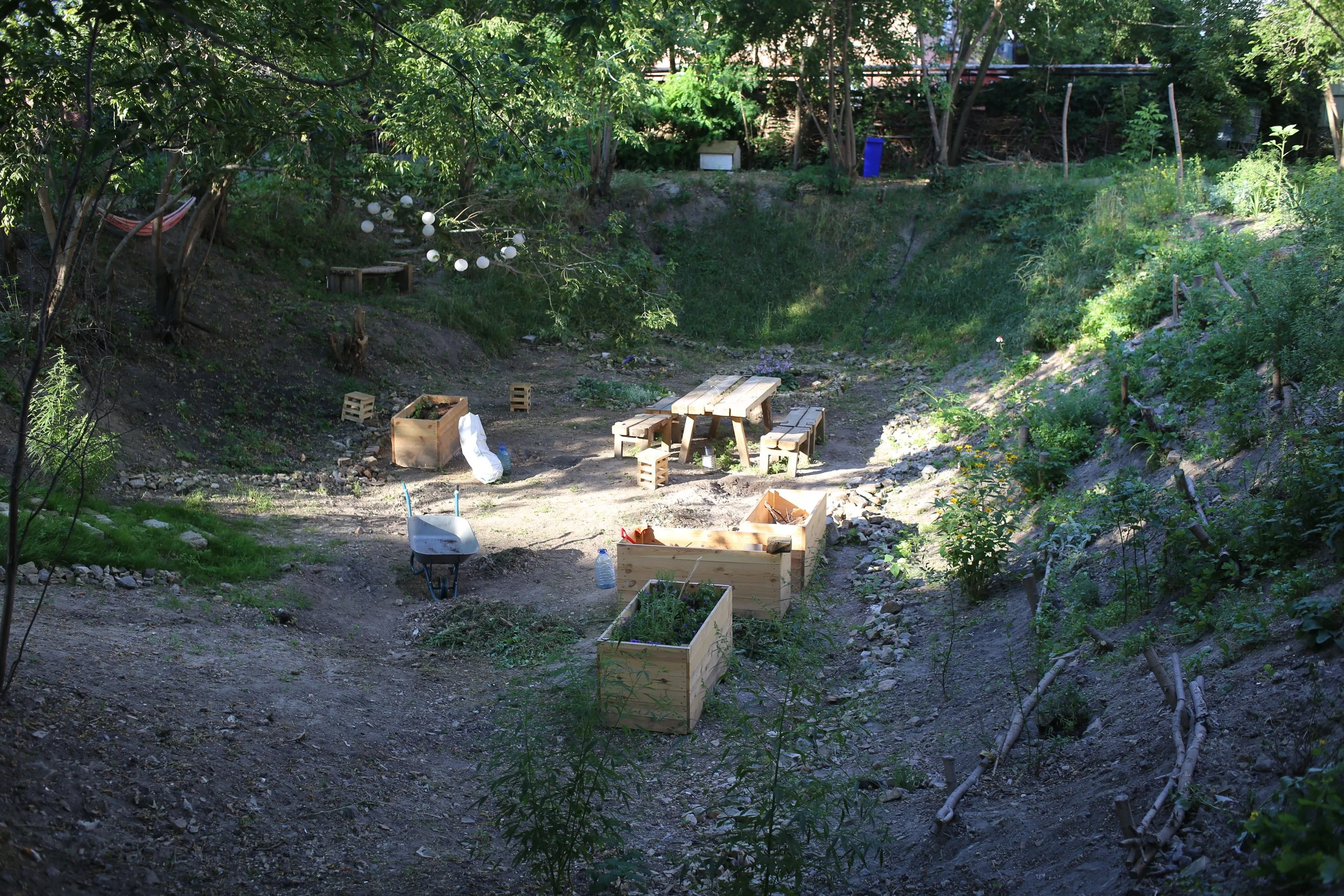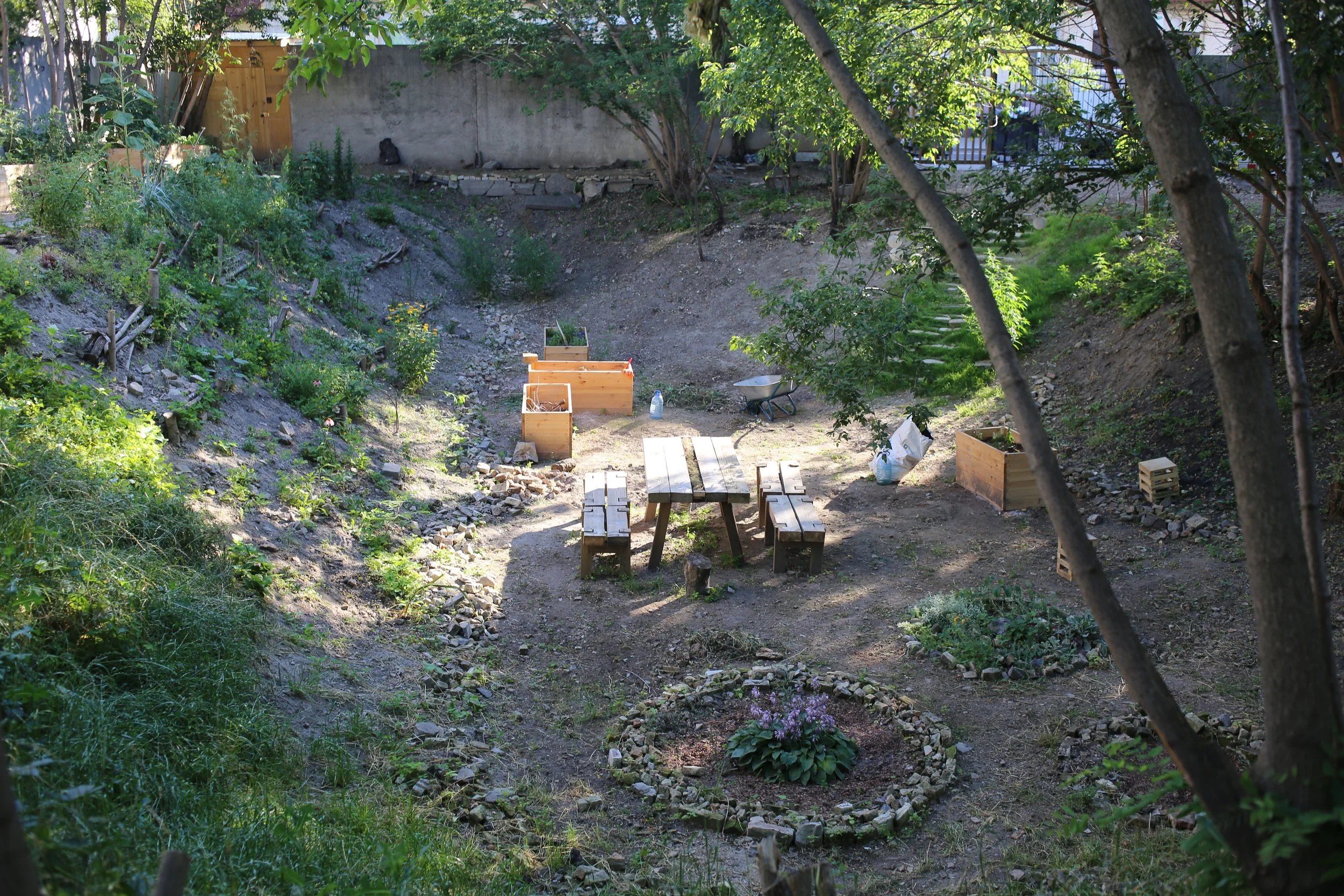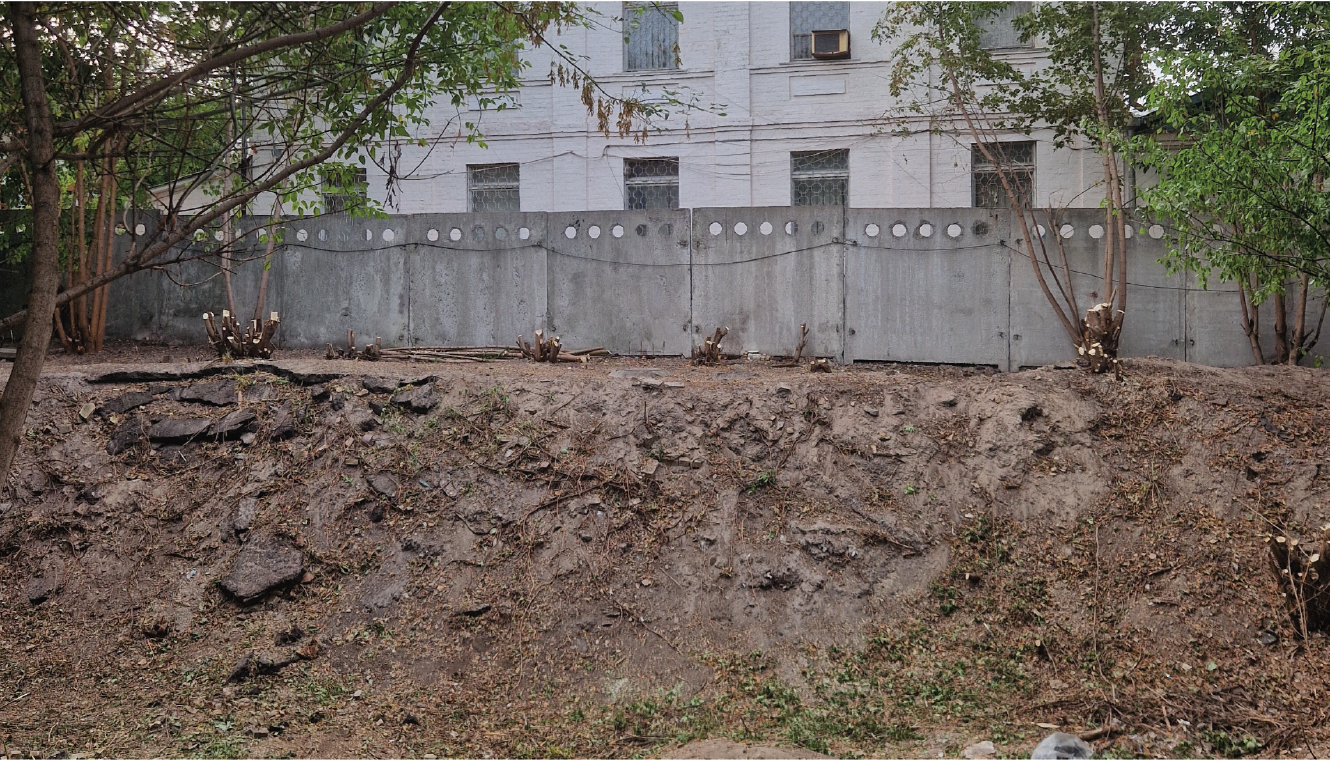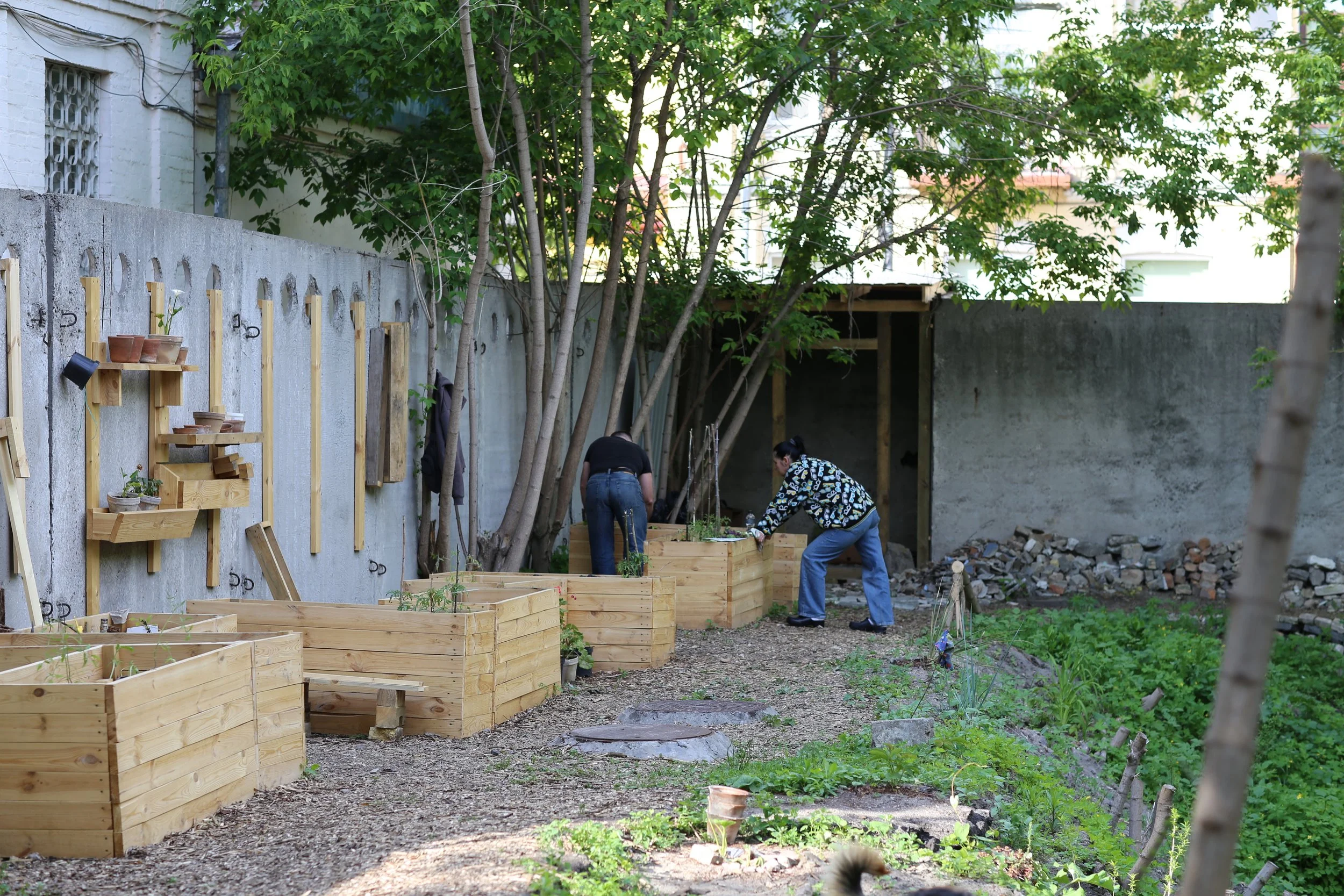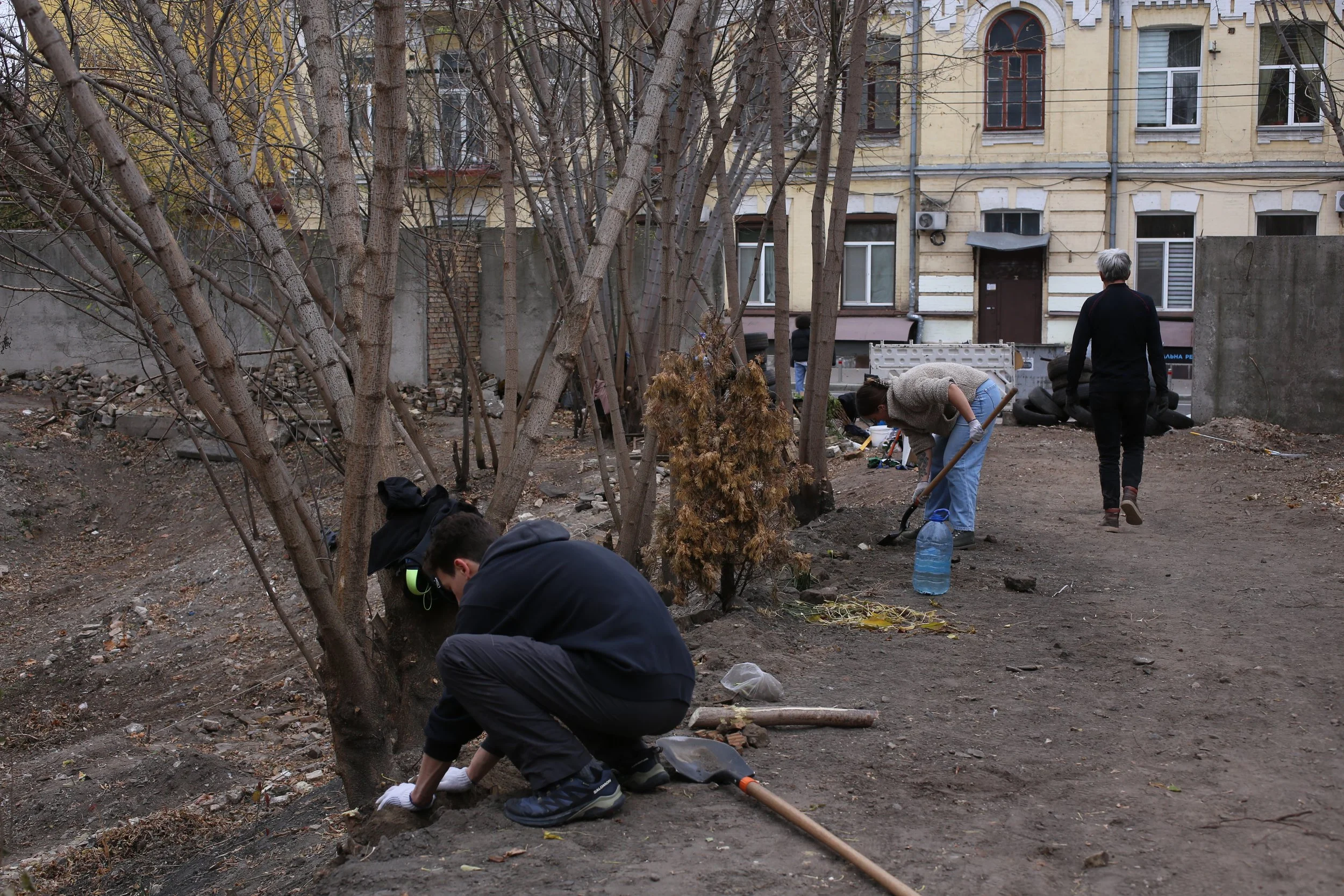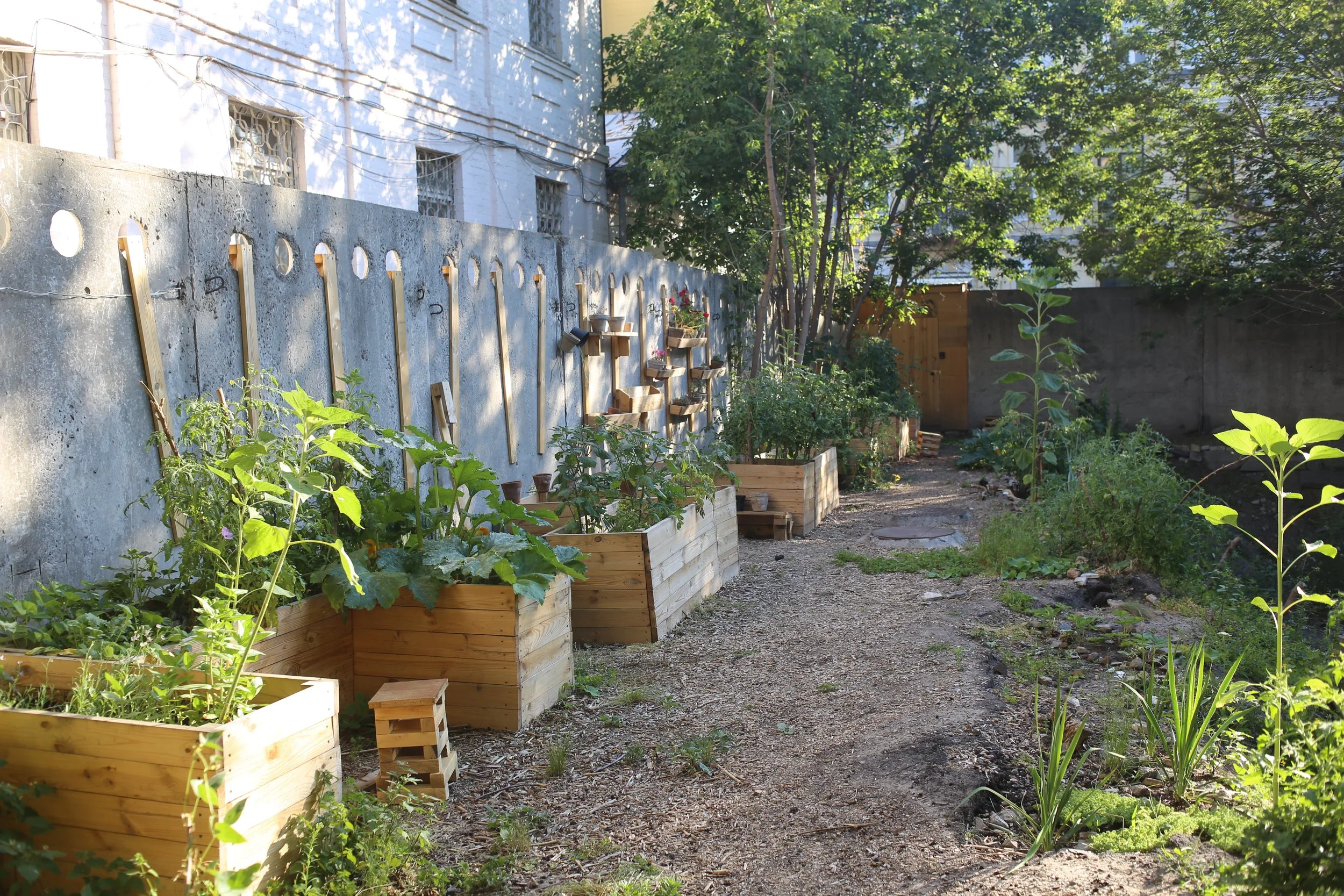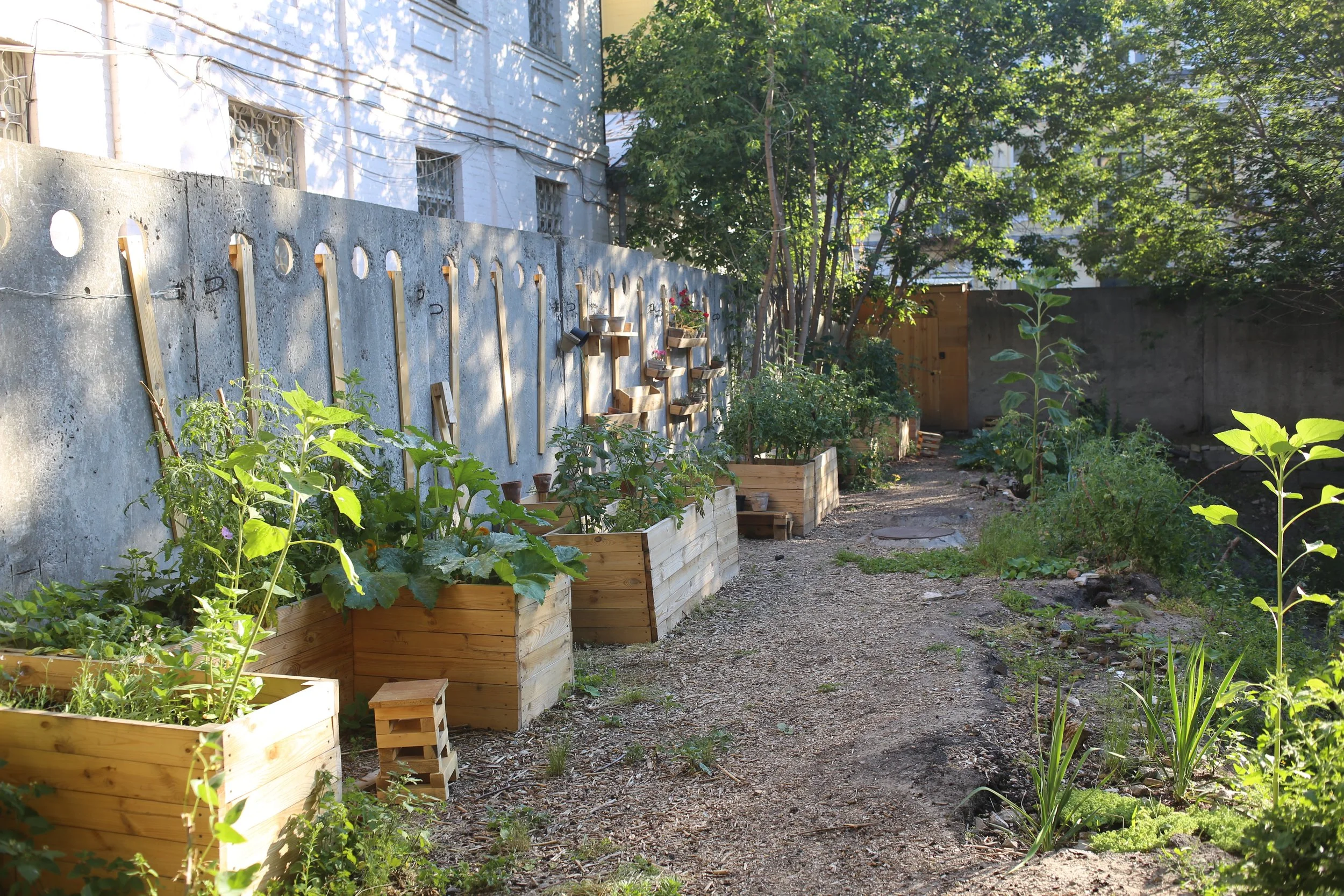
Podil Urban Farm - Поділ сад-город
Back in August 2023 - I hopped over a fence in Podil and… a journey began.
Podil Urban Farm - A Community Garden Built on Rubble
Hope takes root in the ruins.
In the heart of Kyiv’s historic Podil district, on a forgotten plot left vacant since the Soviets demolished a building in 1985, something extraordinary is growing: a community garden for local citizens.
Podil Urban Farm opened in Spring 2025 after a long journey. We did it with neighbours, volunteers from Ukraine and around the world, and a dream. We cleared the debris (over 40 tons of garbage!), cut back the weeds, removed many invasive species of trees and planted seeds. Not just in the soil, but in the city’s soul. A garden built with hands, laughter, and defiance. In a time of war, we reclaimed space for healing, growing, and belonging.
The Origin Story
It all began in August 2023. I was looking for a site to design and build a Nordic Therapy Garden. My friend Philip showed me this empty lot - and brought a ladder for me to climb over the fence. It was an absolute jungle in there. Completely overgrown and filled with trash. But nature dominated and it was easily only 24 degrees in there, while it was 35 degrees out on the street.
I knew this was a great location for… something… anything. A biodiversity park, a therapy garden, a zen garden or… a community garden.
Podil Urban Farm / Поділ сад-город
This isn’t some utopian daydream. This is Podil. A district that’s taken the hits for 1500 years and keeps going. Right here, where the city breathes heavy with history and sirens, we’ve planting something radically simple: a community garden. But we did it on an abandoned plot of land after kicking in the gates and we did it with volunteers from Ukraine and around the world.
A 17th century building was knocked down in 1985 and the plot was walled in and left to its own devices. Nature took over but an invasive species of tree (American Maple) dominated the biosphere. With the constant threat of developers in Kyiv, we moved in and started building a dream. Half community garden, half zen garden. A much-needed green space in the neighbourhood.
We cleared the land of deadwood and over 40 tons of garbage. We built raised plant boxes, installed rainwater collection, compost bins, a tool shed and we planted the hell out of the place to boost the biodiversity. Insects returned, bees moved in, hedgehogs showed up, neighbours visit regularly. A community has formed, renting a plant box and growing their own food, while sharing it - and ideas - with each other. It’s a shared public space where citizens come together to grow food, grow flowers, grow trust. No experience needed. Just curiosity, care, and maybe a shovel.
So what is a community garden?
It’s a place where people—strangers, neighbours, whole families—collectively care for a patch of land. Some come to plant tomatoes. Some come for quiet. Some come just to be around life digging the soil.
In other countries, community gardens are social glue. They're embedded in schools, housing blocks, abandoned lots. They teach food literacy. Offer therapy without the therapist. Provide a sense of agency in places that have lost control. And now, we’re growing that idea here—in Podil, in wartime, on purpose.
Thank you to Danish company Novo Nordisk (Ukraine) for donating funds to help make it happen.
We’ve got:
Raised beds for vegetables, herbs, and flowers
Shared tools and resources
Rainwater collection
Compost bins
A greenhouse on the way - to extend the seasons
Flower boxes for local school kids to care for
Why does it matter?
Because gardens aren’t just about food. They’re about people.
They reduce stress. Lower blood pressure. Increase physical activity. Strengthen immune systems. But more than that, they grow social health. You meet people you wouldn’t otherwise meet. You solve problems together. You take care of something—and get taken care of in return.
In a country rebuilding itself from the soil up, that matters.
Podil Urban Farm is proof of concept. We built it with donated tools, scavenged materials, and pure stubborn hope. If we can do it here, anyone can. Copy it. Adapt it. Start your own. We’re here to grow. Together.
Timeline
-
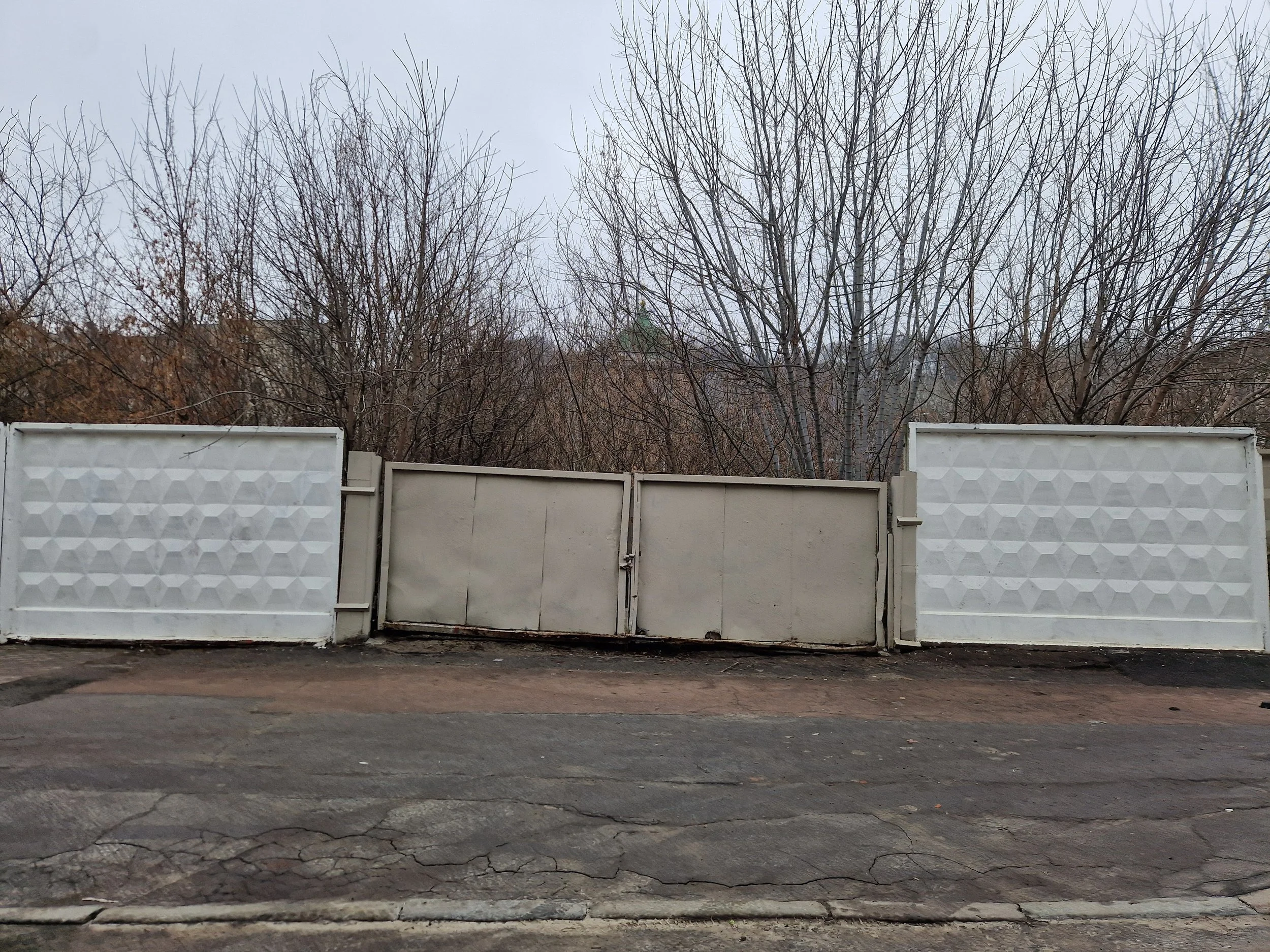
.
2023
- August 2023: my friend Philip introduced me to a special place. He brought a ladder and I hopped over a fence into an abandoned plot of land in Podil. I saw possibilities in the jungle.
- We remove the barbed wire lining the top of the fence.
- Autumn 2023: I started meeting with the City of Kyiv’s Dept for Environmental Protection about using this space to design and build a Nordic Therapy Garden, with the help of the Danish Embassy.
-
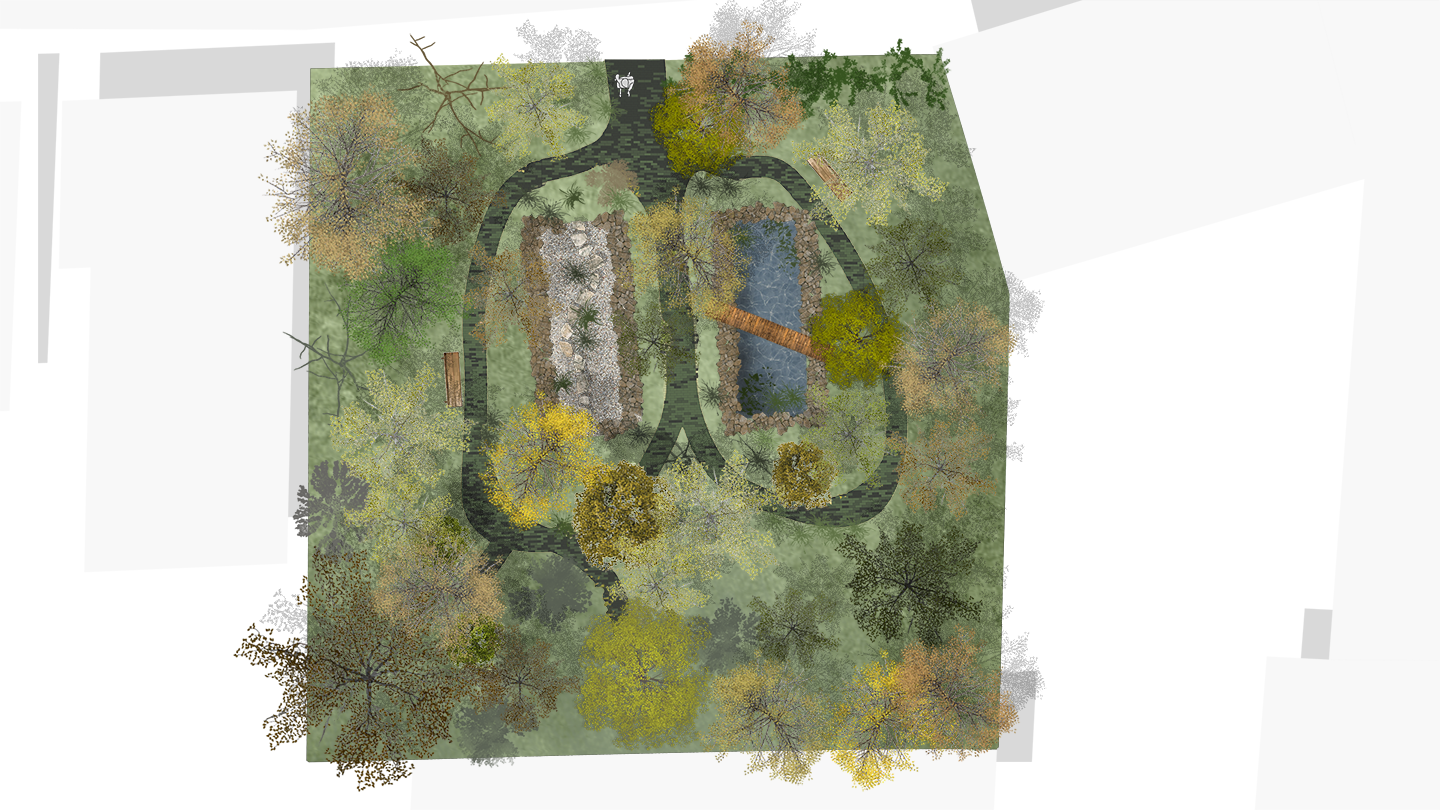
.
First half of 2024
-Early 2024: I have a staff member at my company start planning and rendering the garden.
But… it turned out that the bureaucracy involved in getting permission to make a garden on the site is a nightmare. I found another location for my Nordic Therapy Garden and moved on to build it.
- Spring 2024: Philip and I nevertheless continue thinking about creating a park or garden of some sort on the site and started developing workarounds to the bureaucracy.
- Summer 2024: An external threat appears. An oligarch buys the buildings next to the plot of land - meaning he could look at a map and acquire the plot, as well. We needed to act.
- Summer 2024: An student intern (an Australian studying in Copenhagen) starts analysing the site in great detail for his thesis, giving me great insight into the space and its potential
-
.
Second half of 2024
- July/August 2024: Because of the externa threat, we decide to remove the gate and move in. Organising volunteer weekends to start clearing out the dead wood, removing the garbage and cutting down many of the invasive species of trees (American Maple) that agressively dominate the soil, after listening to the advice of botanists.
- Autumn 2024: Volunteer weekends continue through the autumn. Philip and I pay for garbage removal (30 tons!) and we realise that this is a real passion project. So many volunteers help us every weekend to make this happen.
- Autumn 2024: The plans for the space were the creation of a “zen garden” - kind of vague. We were focused on making a green space but then it hit me suddenly one weekend: a community garden! OF COURSE! Just like all over the world. Locals forming a community and taking stewardship over the space with a self-governing democratic system.
- Late 2024: We finish our work and wait for spring.
-

.
- Early 2025: As the weather improved, work continues in the garden. The new idea of a community garden takes shape. I designed the concept of raised boxes for growing vegetables and form the structure for how the community can “rent” a box for 500 UAH a year, with the money going into a community funding pool.
The right side of the garden is the sunny side, so the coming community would have boxes there. The left side was planned to be a “zen space” with benches among the cool trees.
- Spring 2025: I secure funding from the Danish company Novo Nordisk (Ukraine office) to help buy materials, rainwater collection, tools, pay for machines, etc. Their support has been invaluable. The NGO DIY Ukraine administers the funding.
-

.
-Spring 2025: The first community members join up.
-We install a gate (still problems with garbage and people using the space as a toilet), install compost bins, start building raised plant boxes, build a tool shed, install rainwater collection, etc. Again, ALWAYS with amazing volunteers.
- May 2025: The garden opens. More community members sign up. Still constant work to be done, but the garden starts evolving.
-
.
- Summer 2025: More community members are on board. The first meeting to discuss how to run a community garden takes place. Plants are growing wonderfully, both in the boxes and around the garden. Biodiversity is off the charts.
- More funding is applied for in order to complete my vision of the garden, including things like a greenhouse to extend the use into the winter, materials for more plant boxes, purchasing more plants and trees, etc.
